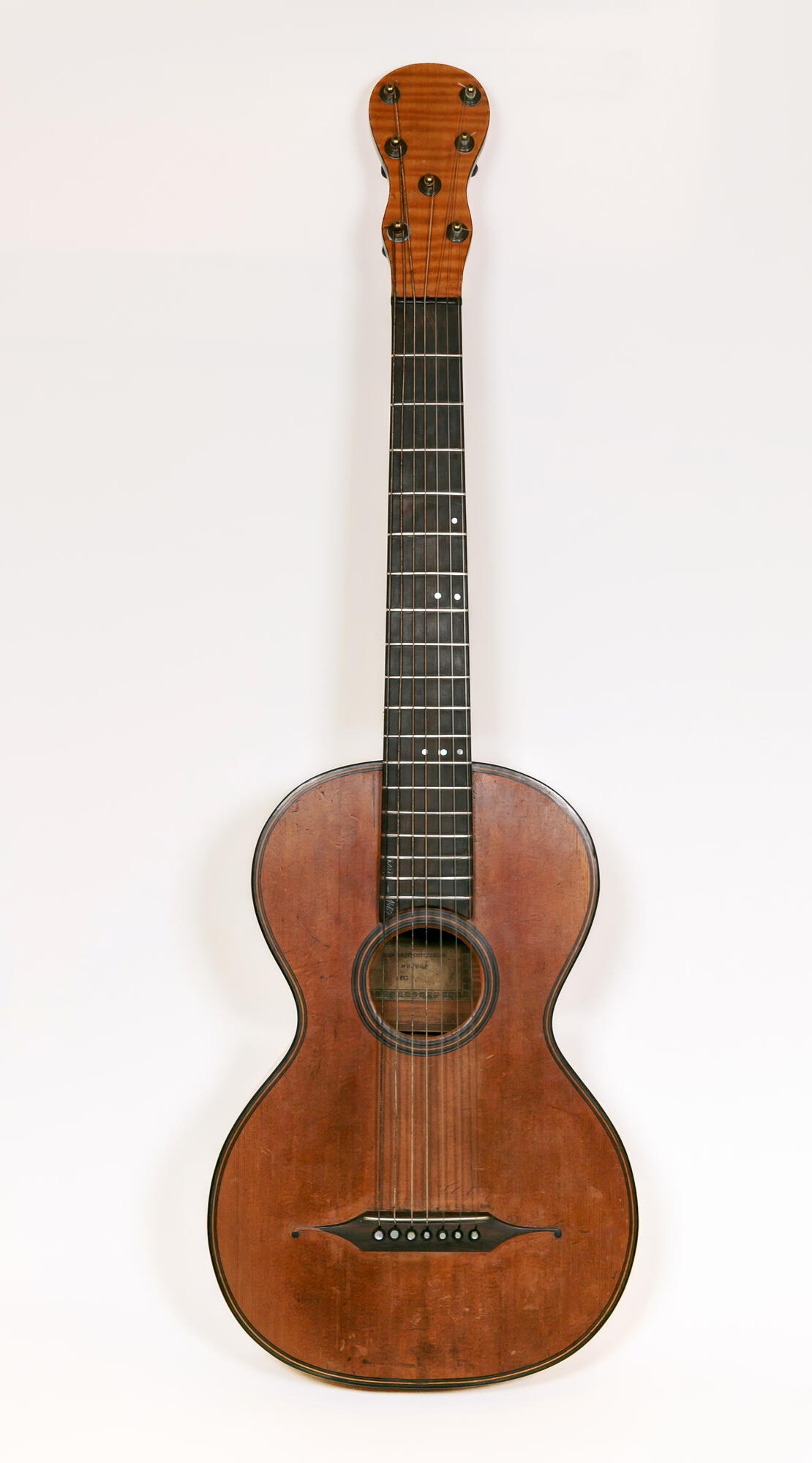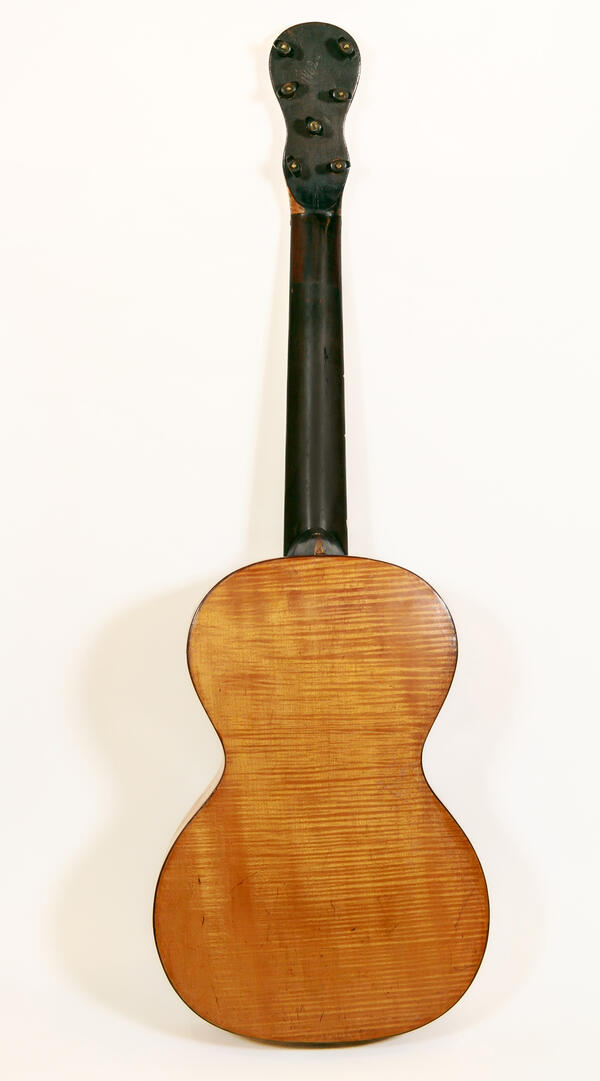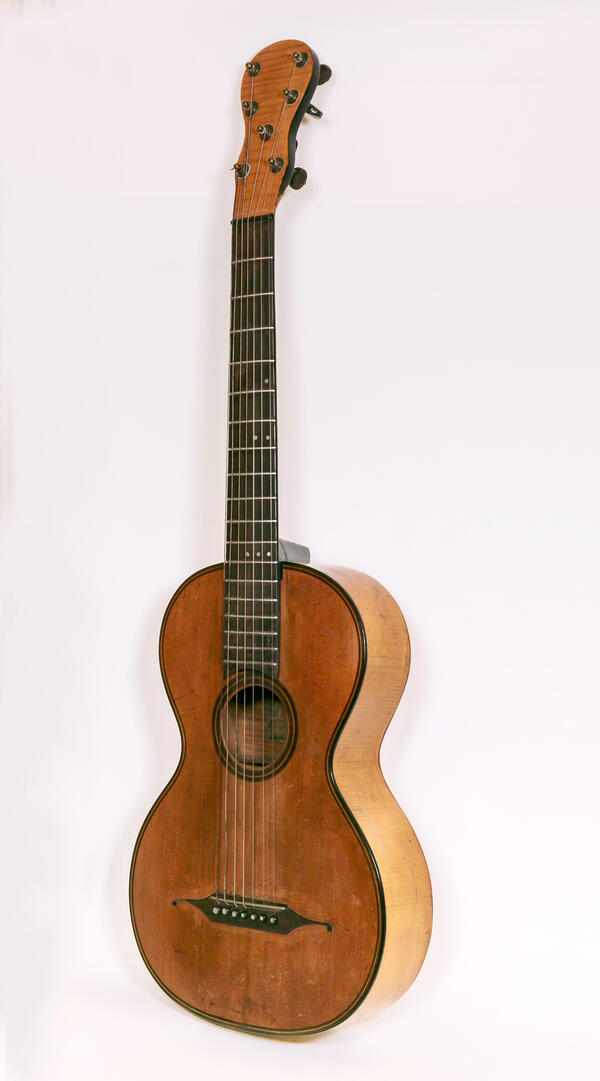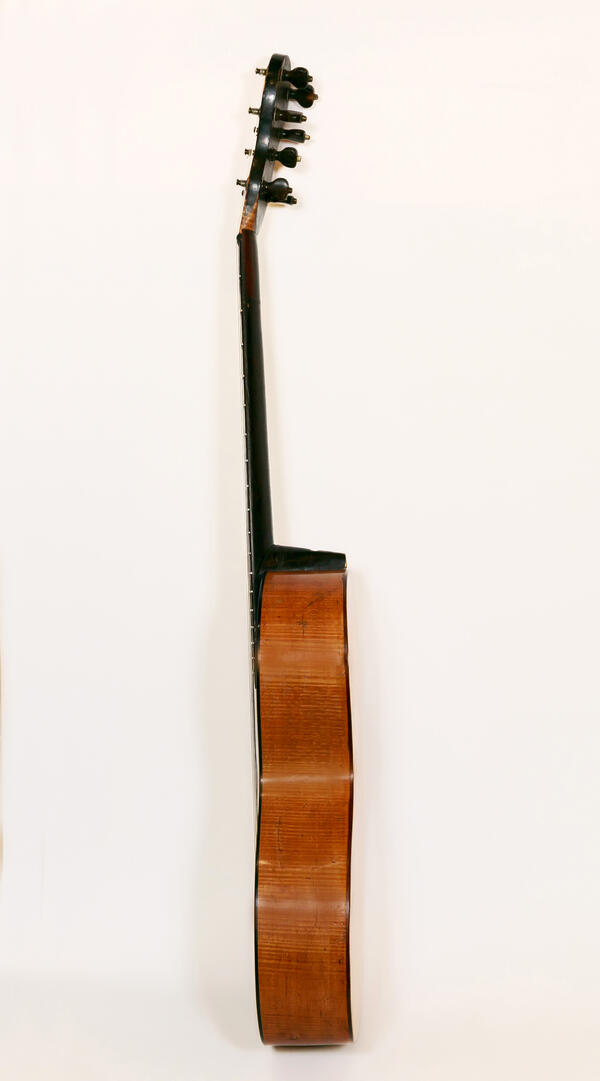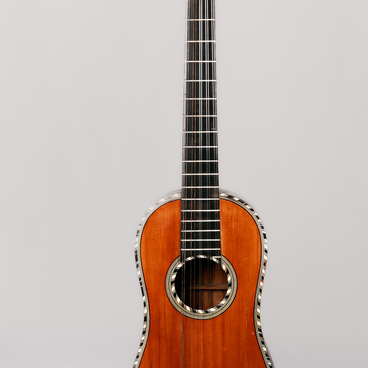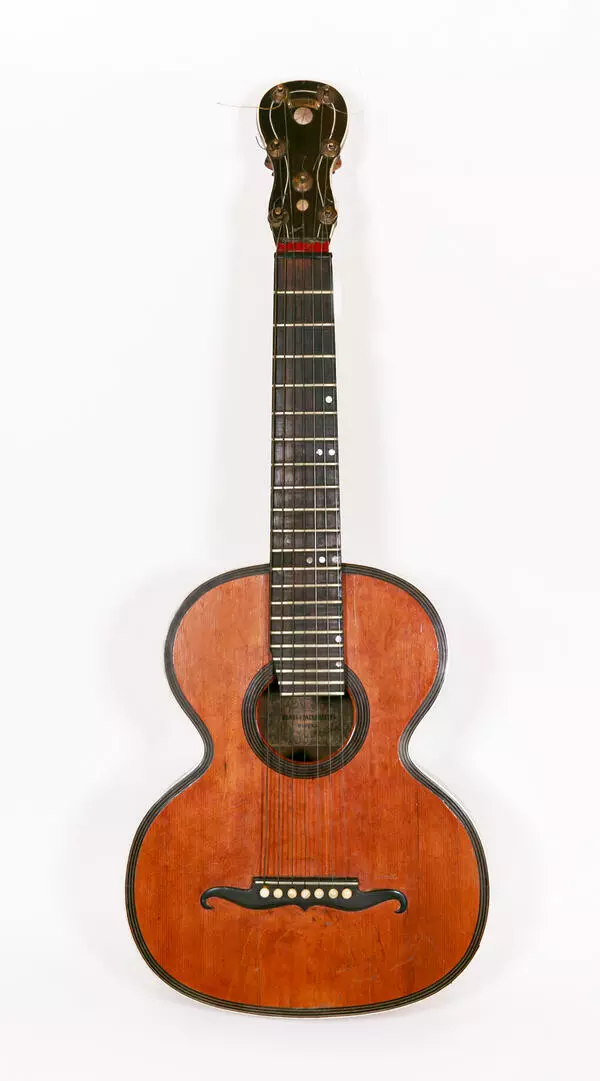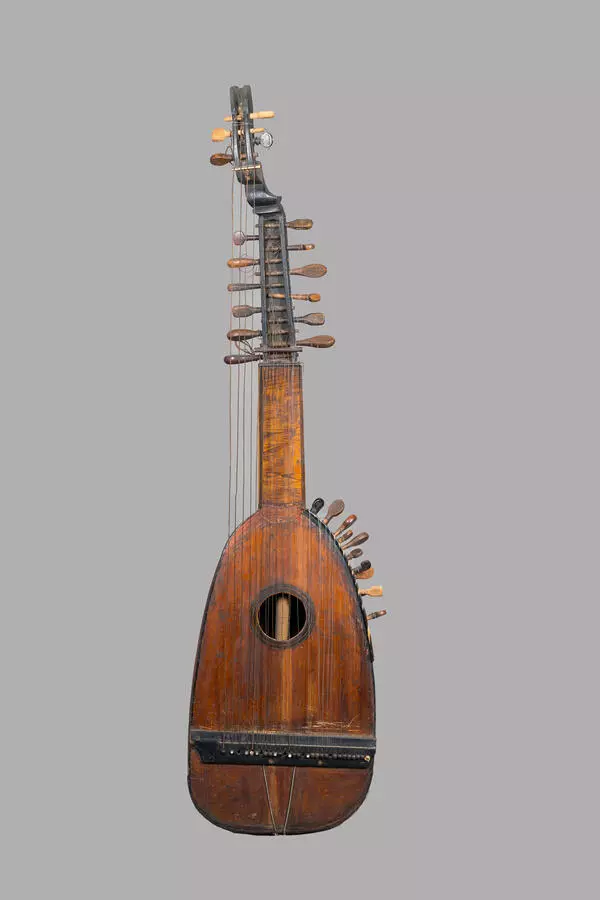One of the most eye-catching instruments in the Museum of Music is a guitar made by the famous Moscow craftsman Ivan Krasnoshchyokov in 1834. This guitar used to belong to Nikolay Kruchinin (Khlebnikov), a musician, an Honored Artist of the RSFSR, and a scholar of Romani folklore.
Nikolay Kruchinin founded the first Romani art studio in 1920 and strove to popularize the Romani music traditions in Russia. In collecting the Romani folklore, he was supported by Maria Nikolayeva, a relative on his father’s side.
Maria Nikolayeva was not only a singer with a very expressive voice but also the author of several Romani songs and romances. Her most popular composition was the romance waltz “In the Fateful Hour” which she wrote in 1876. Later, Leo Tolstoy included this song in his drama “The Living Corpse.”
Maria Nikolayeva was friends with Tatyana Demyanova, a Moscow-based Romani singer popular in the 1830s, a lead singer in the choir of Ilya Sokolov. Demyanova was known as the “gypsy singer Tanya.” She was the one who sang for Alexander Pushkin the day before his wedding.
Tatyana Demyanova had a guitar made by Ivan Krasnoshchyokov and in her later years, she gave it to one of her female friends. Nikolay Kruchinin saw this guitar at Maria Nikolayeva’s place in 1910 when he started writing down Romani songs and romances recited by Nikolayeva.
In 1917, he received this musical instrument as a gift. Kruchinin not only carefully kept the guitar of the “gypsy singer Tanya” but also used it in almost all of his concerts. He took this guitar with him when visiting Soviet forces during the Great Patriotic War.
This story makes it tempting to believe that Alexander Pushkin listened to the sound of this guitar. However, the instrument was made only in 1834, and Pushkin got married in 1831, so there could have been no way of him hearing this instrument the day before his wedding.
Admirers of music and artists who have visited the museum have always paid attention to this guitar. Ivan Rom-Lebedev, the founder of the all-Romani Romen Theater, also visited the museum to look at this instrument.
Nikolay Kruchinin founded the first Romani art studio in 1920 and strove to popularize the Romani music traditions in Russia. In collecting the Romani folklore, he was supported by Maria Nikolayeva, a relative on his father’s side.
Maria Nikolayeva was not only a singer with a very expressive voice but also the author of several Romani songs and romances. Her most popular composition was the romance waltz “In the Fateful Hour” which she wrote in 1876. Later, Leo Tolstoy included this song in his drama “The Living Corpse.”
Maria Nikolayeva was friends with Tatyana Demyanova, a Moscow-based Romani singer popular in the 1830s, a lead singer in the choir of Ilya Sokolov. Demyanova was known as the “gypsy singer Tanya.” She was the one who sang for Alexander Pushkin the day before his wedding.
Tatyana Demyanova had a guitar made by Ivan Krasnoshchyokov and in her later years, she gave it to one of her female friends. Nikolay Kruchinin saw this guitar at Maria Nikolayeva’s place in 1910 when he started writing down Romani songs and romances recited by Nikolayeva.
In 1917, he received this musical instrument as a gift. Kruchinin not only carefully kept the guitar of the “gypsy singer Tanya” but also used it in almost all of his concerts. He took this guitar with him when visiting Soviet forces during the Great Patriotic War.
This story makes it tempting to believe that Alexander Pushkin listened to the sound of this guitar. However, the instrument was made only in 1834, and Pushkin got married in 1831, so there could have been no way of him hearing this instrument the day before his wedding.
Admirers of music and artists who have visited the museum have always paid attention to this guitar. Ivan Rom-Lebedev, the founder of the all-Romani Romen Theater, also visited the museum to look at this instrument.
